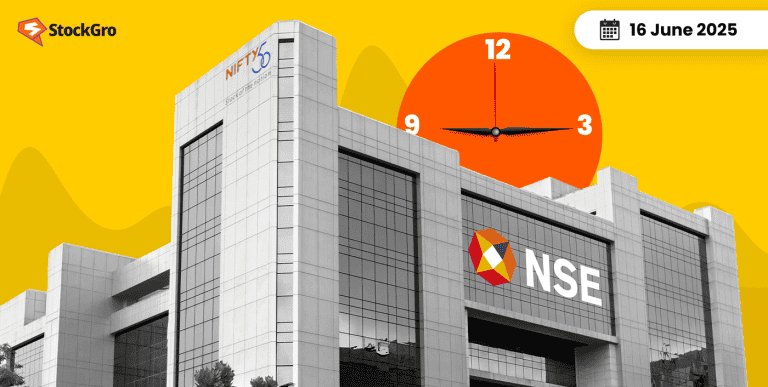
Tata Motors share price took a sharp hit on June 16, 2025, falling over 5% intraday, and leaving investors searching for answers. One of India’s most iconic auto stocks, Tata Motors has had its share of highs and lows – but this time, global worries are weighing heavier than ever.
Let’s break down what happened, why Tata Motors stock is falling, and where things could be heading.
How did Tata Motors land here?
Tata Motors isn’t just about Indian cars anymore. After acquiring Jaguar and Land Rover back in 2008, its luxury UK business became the real profit machine. As of FY25, JLR contributes around 71% of Tata Motors’ total revenue and nearly 80% of its profits. So, any movement in JLR’s financial health directly impacts Tata Motors share price.
Recently, JLR presented its financial guidance for FY26, and the numbers weren’t as exciting as investors hoped. The update comes at a time when investors have been increasingly optimistic about Tata Motors stock, especially due to the recovery in its passenger vehicle and EV segments.
Also Read: ONGC, Oil India Shares Climb on Crude Oil Price Surge
The Big Trigger: JLR’s Cautious FY26 Outlook
Here’s where things got shaky:
| Key Metric | FY25 Actuals | FY26 Guidance |
| EBIT Margin | 8.5% | 5% – 7% |
| Free Cash Flow | £1.5 billion | Close to zero |
While JLR expects EBIT margins to eventually return to 10% in FY27-FY28, the short-term forecast spooked investors. The warning of flat free cash flow and reduced margins in FY26 triggered a sell-off in Tata Motors stock.
This directly led to the Tata Motors share price fall, with the stock dropping 5.2% to ₹674.70 on the BSE. Over the past year, the stock is now down around 28%. From its 52-week high of ₹1,179.05, the Tata Motors share price has corrected nearly 43%.
You may read: Air India Crash Triggers 2% Drop in Tata Group Stocks
What’s causing JLR’s Financial Headwinds?
Several global issues are putting pressure on JLR’s performance, and in turn, explaining why Tata Motors is falling:
Global Economic Pressures
Luxury car demand is slowing in many parts of the world due to inflation, weak consumer sentiment, and high borrowing costs. In China, the world’s largest auto market, the luxury segment is facing tough competition and shrinking demand.
High EV Transition Costs
As the world moves towards electric vehicles, JLR is investing heavily to catch up. While this will pay off in the future, the huge upfront costs are impacting current margins and cash flows.
Supply Chain Issues
Semiconductor shortages continue to disrupt production schedules, delaying deliveries and limiting output.
Tariff Risks
High tariffs, particularly in the US – currently around 25% on vehicles imported from the UK – are adding to JLR’s challenges. These trade barriers impact pricing strategies and squeeze profitability, especially as discussions on revised trade agreements remain unresolved.
You may also like: Paytm Share Price Drops 10% After MDR Clarification
Tata Motors Q4 FY25 Financial Performance
Here’s a quick look at Tata Motors’ latest quarterly numbers:
| Financial Metric | Q4 FY25 | Change (YoY) |
| Consolidated Net Profit | ₹8,470 crore | -51% |
| Total Income | ₹1,19,503 crore | +0.4% |
While revenues stayed flat, net profits saw a sharp decline mainly due to one-time gains in the previous year.
Where is Tata Motors headed?
While FY26 might be challenging, Tata Motors is not standing still.
JLR’s recovery plan
JLR expects margins to recover to 10% by FY27–FY28 as new EV models and cost-efficiency plans take shape.
Demerger plans
Tata Motors is working on separating its commercial vehicle business into a standalone listed entity by October 2025. Post-demerger, JLR will contribute over 90% of Tata Motors’ consolidated EBITDA.
Strong Domestic Growth
In India, Tata Motors continues to lead in commercial vehicles and is building momentum in passenger vehicles, especially in electric and CNG segments. The domestic market remains a bright spot for future growth.
You may also read: Tata Motors share analysis
So, why is Tata Motors stock falling?
In short – it’s about near-term uncertainty. Tata Motors share price fall is being driven by concerns around JLR’s cash flow, lower margins, and global economic risks. But underneath, the company is executing long-term strategies that could pay off over the next few years.
Even quality stocks like Tata Motors can go through rough patches, especially when exposed to volatile global markets. For investors, the key is to understand the difference between short-term noise and long-term value.
Tata Motors may be down, but it’s far from out. The next few quarters could be choppy, but for patient investors, Tata Motors stock may still offer significant value – if JLR can execute its turnaround and domestic growth stays strong.

